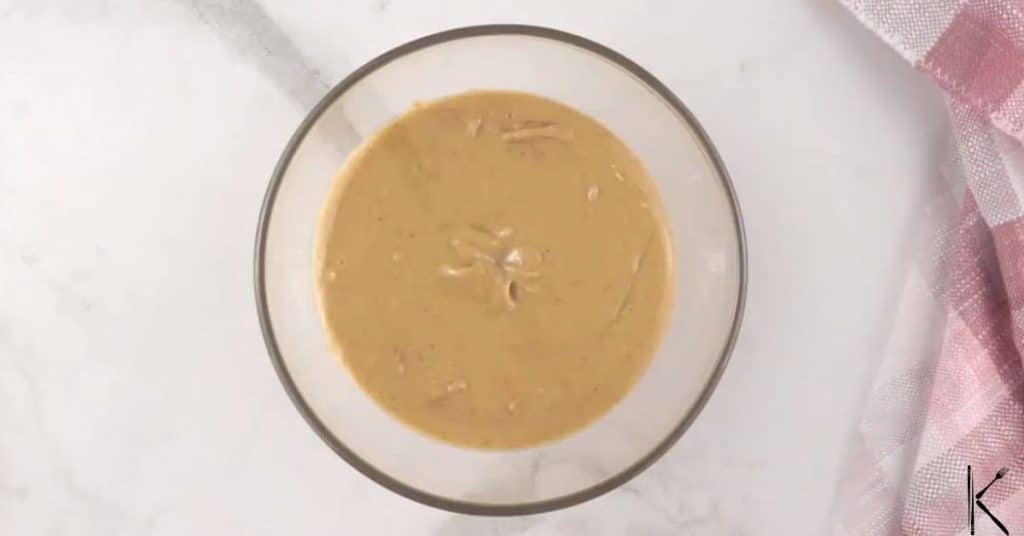In summary: Yes, you can freeze peanut butter to extend its shelf life, especially if it is natural or fresh peanut butter. Despite the potential separation, a thorough stir will restore its creamy consistency.
Whether on a sandwich, in a smoothie, in a cookie, or straight out of the jar, peanut butter’s nutty flavor and rich creamy texture are pure indulgence. This popular nutritious spread has a long shelf life so it does not require freezing for short-term storage.
Whether you have made your own peanut butter or wish to portion your peanut goodness in smaller quantities, freezing is a good option. Here is everything you need to know about freezing peanut butter.
Can Peanut Butter Be Frozen?
Although it has a long shelf life, freezing peanut butter certainly is an option for storing it without risking or spoiling the flavor or texture.
Since natural or fresh peanut butter does not contain any unnatural additives or added salt, it has a shorter shelf life. Consider freezing it if you don’t see yourself finishing your batch within three months.
Although the oils may separate, you can always just give it a good stir to emulsify the mixture to its original creamy consistency.
How To Freeze Peanut Butter
If you are freezing a sealed and unopened store-bought plastic container of peanut butter, you can pop it into the freezer as is. It is advisable to place the jar in a zip lock freezer bag as there is a small chance that the jar can burst open or crack if the content expands without enough space in the jar.
To freeze homemade or leftover peanut butter from an opened jar, follow the steps below. Remember that you need to eliminate as much air and moisture as possible to store foods safely and prevent freezer burn.
Step 1: Mix
Homemade or pure peanut butter will have a layer of oil on top which has separated from the peanut paste. Mix the oil back into the nut butter to create a smooth and even consistency before freezing. You probably won’t need to do this with store-bought commercial brands.
Step 2: Package
There are three ways in which you can package peanut butter for the freezer. The method you choose will depend on how much peanut butter you need to defrost at a time. Thawed peanut butter cannot go back in the freezer. Choose the below method that suits your needs best.
Method 1: Resealable Freezer Bag
Scoop the peanut butter into a resealable freezer bag. Press out any remaining air before sealing the top. You may want to consider dividing the peanut butter into different bags so that you do not have to defrost the entire batch and use it all at once.
Method 2: Airtight Containers
Scoop the peanut butter into an airtight freezer-friendly Tupperware container, leaving a small bit of headspace at the top for the likelihood of expansion during the freezing process. To protect the peanut butter from contact with air, place a piece of parchment paper or plastic wrap on top of the peanut butter before sealing the container.
Never use a glass jar to freeze peanut butter.
Method 3: Ice Cube Trays
For smaller portions, you can scoop the peanut butter into an ice cube tray and place it in the freezer to harden. Once frozen solid, remove the ice cubes and place them in resealable freezer bags. Press out all the air and seal.
This option is great for taking out only as much as you need at a time and is likely the perfect amount to spread on your sandwich.
Step 3: Label and Freeze
Label the container or freezer bag with the date and place it in the freezer.
How To Thaw Peanut Butter
For the best result, let the frozen peanut butter thaw in the fridge overnight. If you are thawing 100% natural peanut butter, thawing it in the fridge and keeping it at a cool temperature will lessen the separation of the oils from the nut butter.
If some separation still occurs on defrosting, simply give it a good stir to mix everything back together to a smooth paste.
Small portions of peanut butter can also be defrosted at room temperature, although it is more likely to separate.
Peanut butter contains a lot of oil and therefore should not be heated unless you are cooking with it. When defrosting frozen peanut butter, do not place it in the microwave as it will heat very quickly, burn, and spoil.
Types of Peanut Butter
Peanut butter is made from dry-roasted peanuts ground into a spreadable paste. Commercial brands usually contain additions like salt, sweeteners, or emulsifiers which prolong the shelf life and modify the texture or flavor slightly.
Homemade or ‘natural’ peanut butter does not contain any of the additional additives or emulsifiers, making the shelf life a little shorter than the commercially produced product. It is, however, healthier with lower sugar content.
The nutty spread is available either as crunchy or smooth peanut butter. Crunchy peanut butter includes some small coarsely ground peanut pieces providing extra texture, while the smooth variety is a silky smooth and thick paste.
Peanut butter is versatile and used in sweet or savory applications. It is largely known as a spread for bread or crackers, especially with the addition of ‘jelly’, ‘jam’, or honey.
The popular flavor has, however, made its way into a host of other dishes such as cookies, brownies, sauces, croissants, crepe fillings, cakes, smoothies, ice cream, and breakfast granola.
FAQs
Conclusion
Freezing peanut butter may seem like a foreign concept, but it is a great way to preserve this rich and creamy spread, especially if you have a large homemade batch. Without risking the loss of flavor or texture, you can now preserve this nutty goodness for up to nine months.
Whether it is for a cake, in frosting, ice cream, a smoothie, a savory sauce, or just a good old sandwich, it’s definitely worth preserving every last bit of peanut butter for indulgent future enjoyment.
Up Next:









